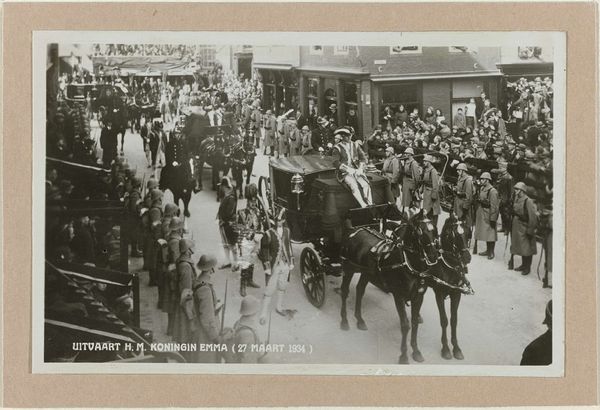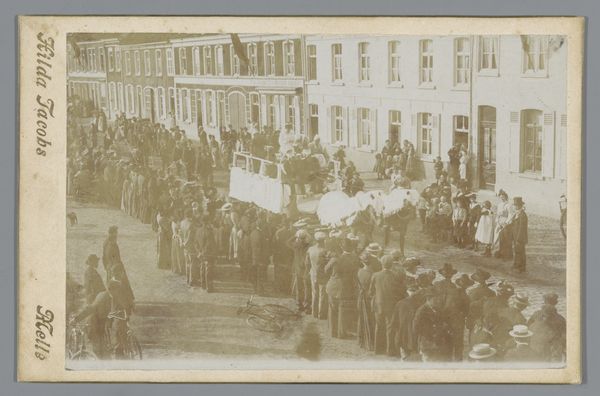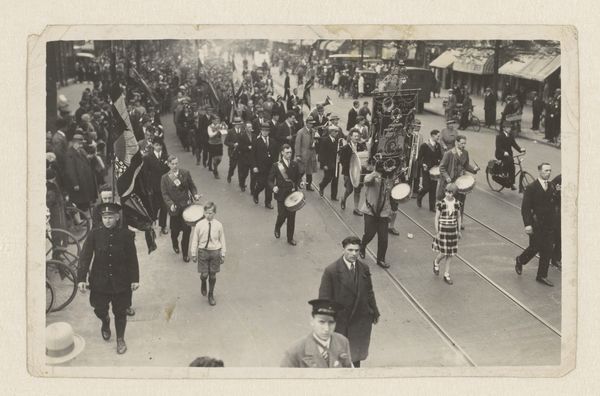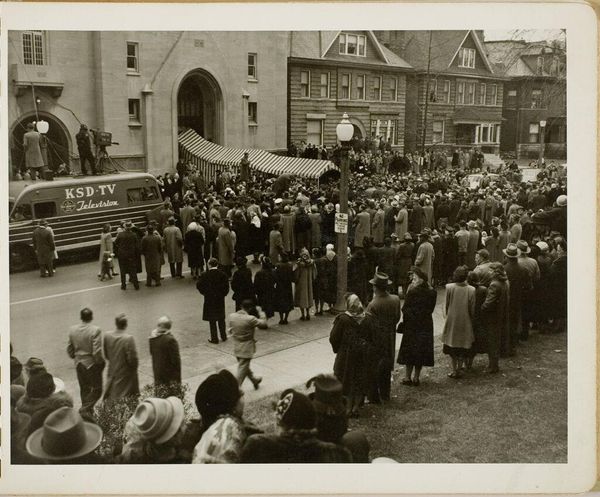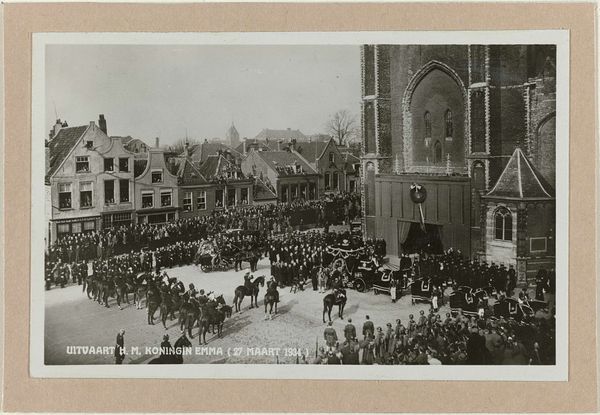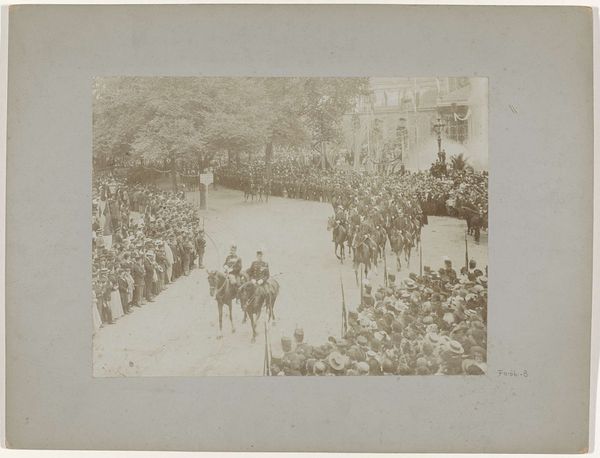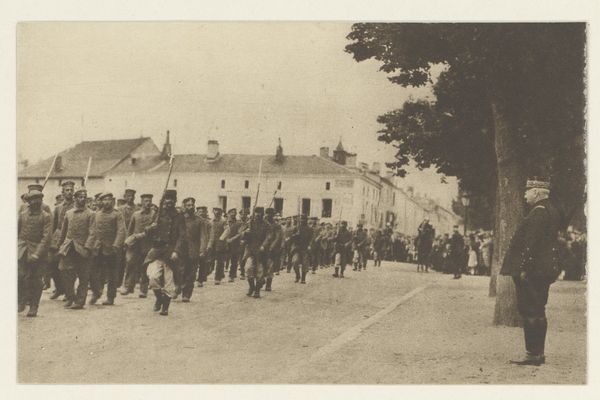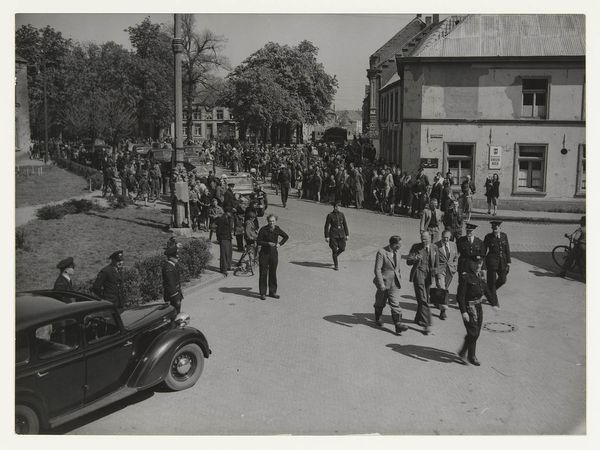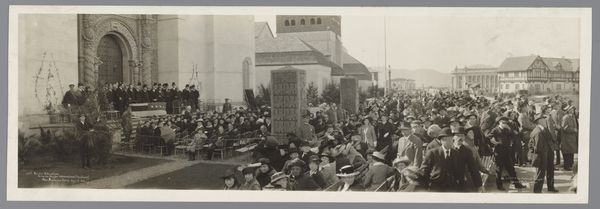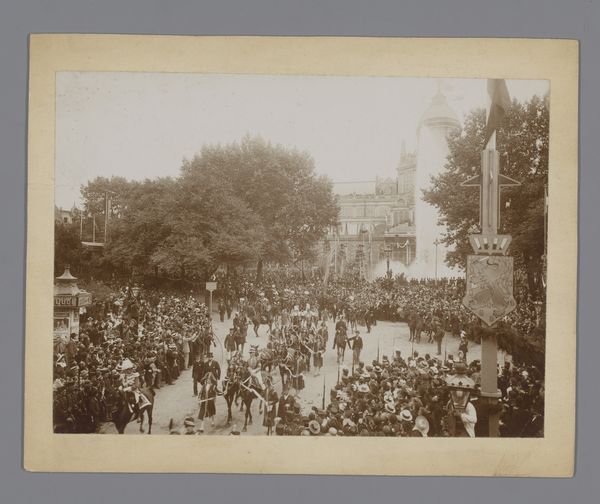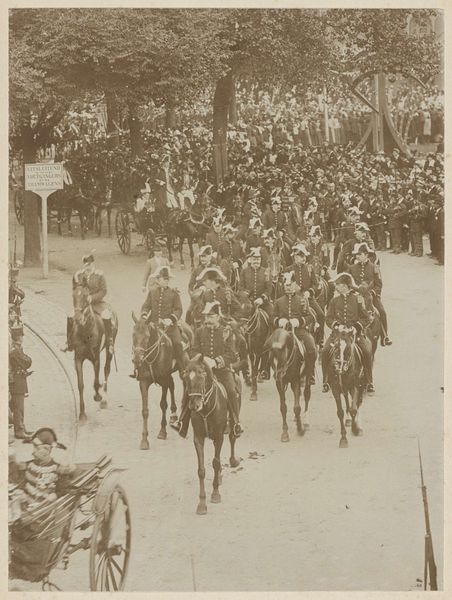
Een bloemenwagen van de begrafenisstoet van Emma, koningin-regentes der Nederlanden, te Delft op 27 maart 1934 Possibly 1934
0:00
0:00
print, photography, gelatin-silver-print
#
portrait
#
print photography
#
still-life-photography
# print
#
landscape
#
archive photography
#
photography
#
historical photography
#
gelatin-silver-print
Dimensions: height 91 mm, width 141 mm
Copyright: Rijks Museum: Open Domain
Editor: This gelatin silver print, likely from 1934, captures the flower-laden hearse procession of Queen Emma of the Netherlands. The density of the crowd, both lined on the streets and perched on rooftops, really strikes me. What can you tell me about this piece? Curator: Look at the sheer volume of people mobilized for this event. How was this collective experience manufactured and consumed? The print itself is a commodity, documenting a public ritual for mass consumption. Note also the labor involved: flower cultivation, street maintenance, and the manufacturing of military uniforms. This photograph is not just about mourning a queen; it’s about the systems of power that enable such displays. Editor: So, you're suggesting we think beyond the emotional aspect and focus on the socio-economic implications? Curator: Precisely! Consider the horses, the carriages, the flowers… all of these elements represent different forms of material production and distribution. Even the photographic process, the darkroom work and printmaking itself, are labor-intensive activities adding to the final commemorative product we are now looking at. How do the various materials shape our understanding of royalty, power, and public mourning? Editor: That's fascinating. I hadn't considered the materiality as an integral part of the event itself, extending beyond the procession itself. It's almost as if the photograph immortalizes not just a Queen but also the means through which her memory is commodified. Curator: Indeed. It's a complex interplay between the visible spectacle and the invisible labor underpinning it. Examining these aspects unveils much about the period and its values. Editor: Thank you for illuminating that perspective! I definitely see this image differently now.
Comments
No comments
Be the first to comment and join the conversation on the ultimate creative platform.
